Riga was treated to a huge display of triathlon this weekend, with huge numbers coming to the capital for the Open Race. The mass-participation over, it was time for the Juniors to race and with the rains now gone, the course beginning to dry and with the water warm enough for wetsuits to be banned, the public were going to get a real treat.
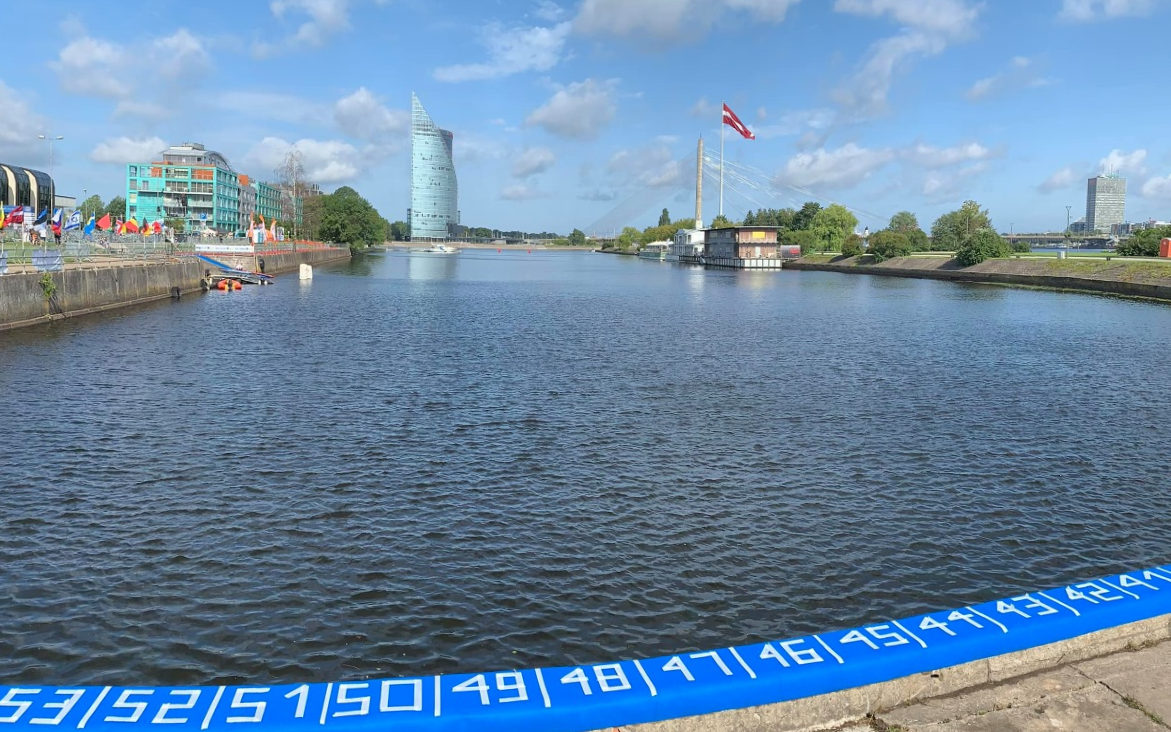
The Junior Women started first and, with a non-wetsuit swim, it was always going to favour the stronger swimmers.
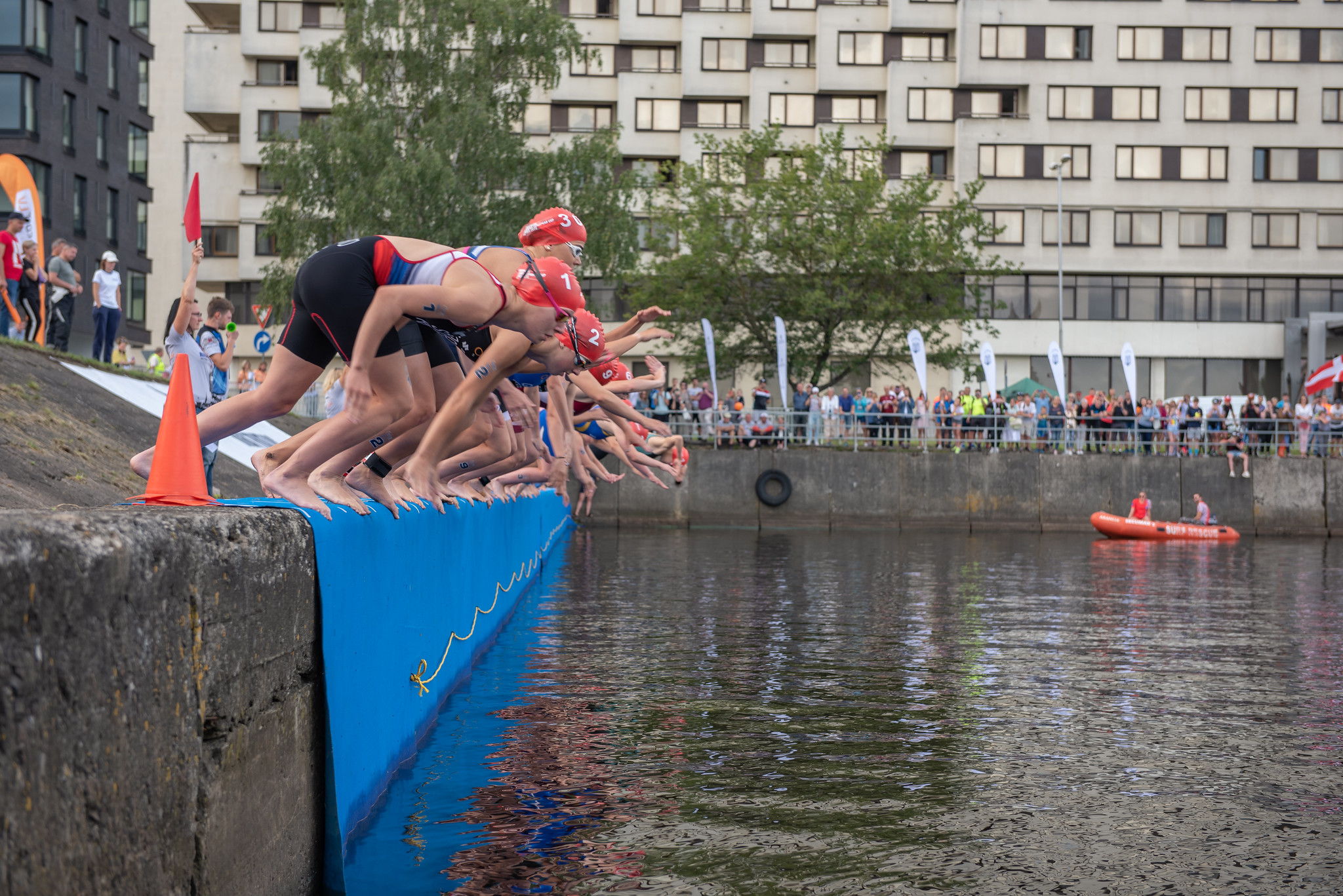
A long pull to the first turn buoy gave the athletes a chance to sort out their positions and under the shadow of the magnificent bridge that dominates the venue, it was a small breakaway of six that took the most direct line. Bianca Seregni ITA was making it look easy.
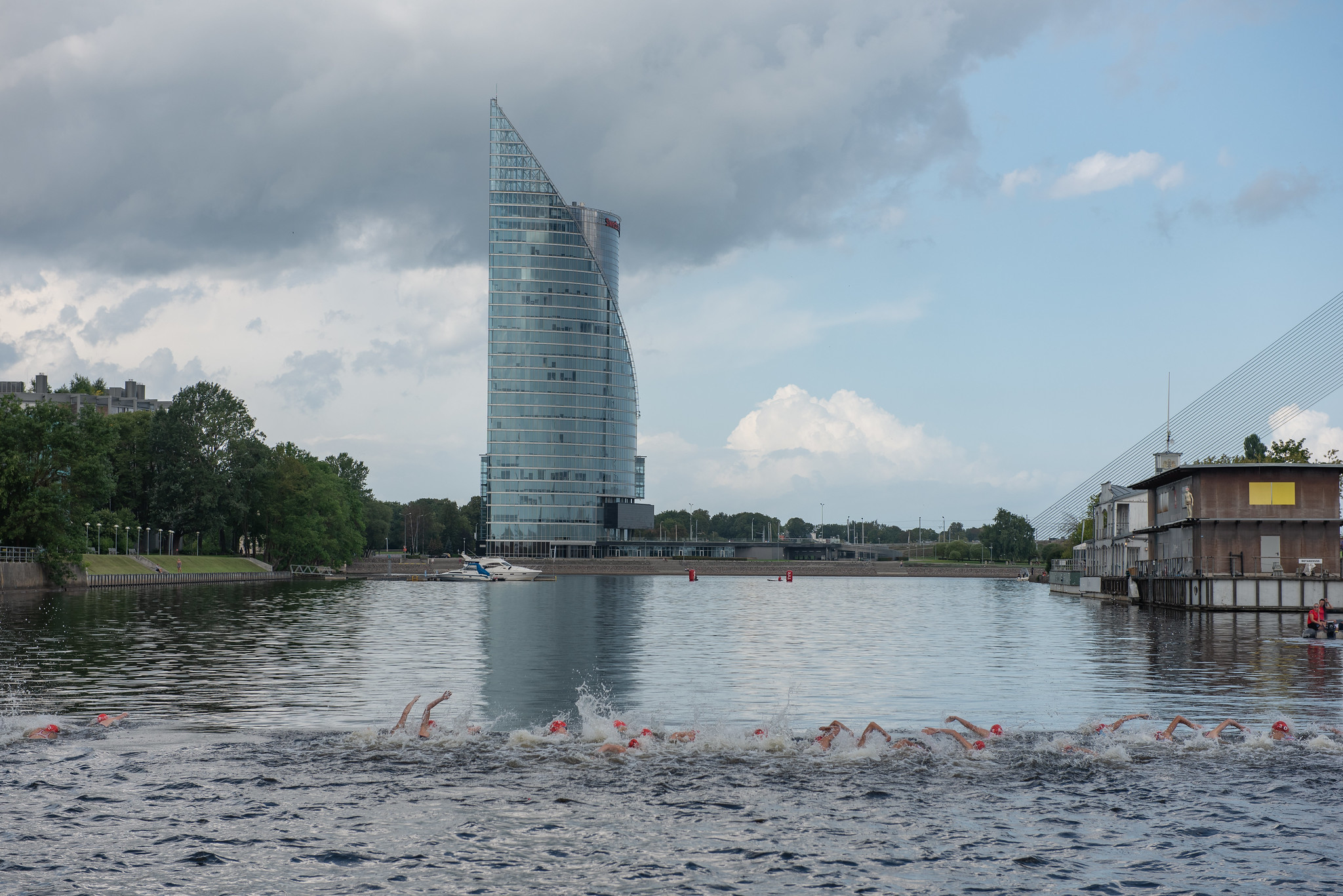
Nearing the first turn buoy and the group fragmented, to show a strong lead being created. The gap between Seregni and the chase pack was now growing but the leader would need support on the bike to keep ahead of the main threat on two wheels, Daniele Leitāne LAT.
Sighting well on the exit, the Italian saved time. The five behind her adjusted their track and followed.
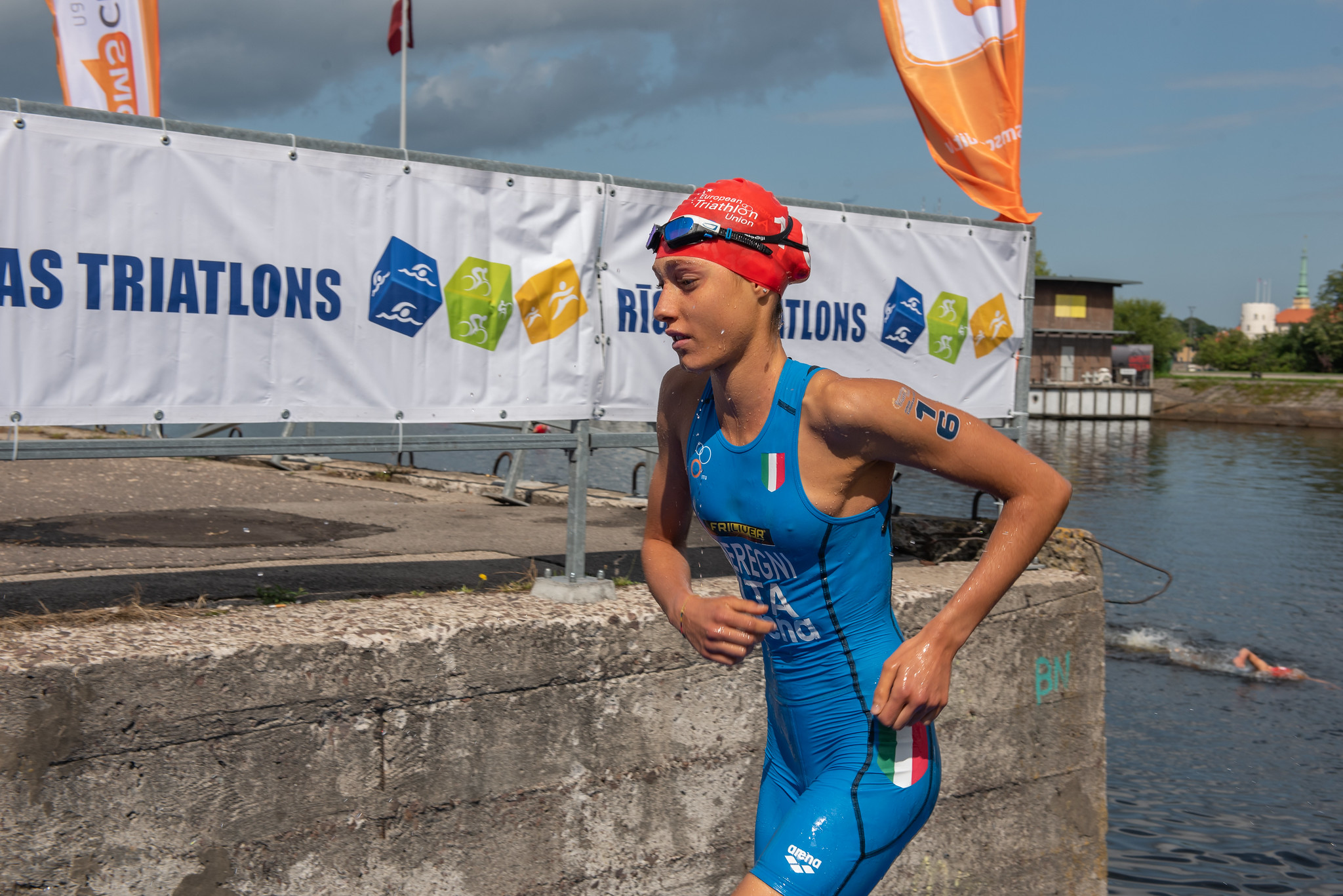
At the swim exit, all was revealed; ITA, GBR, GBR, ITA and ITA.
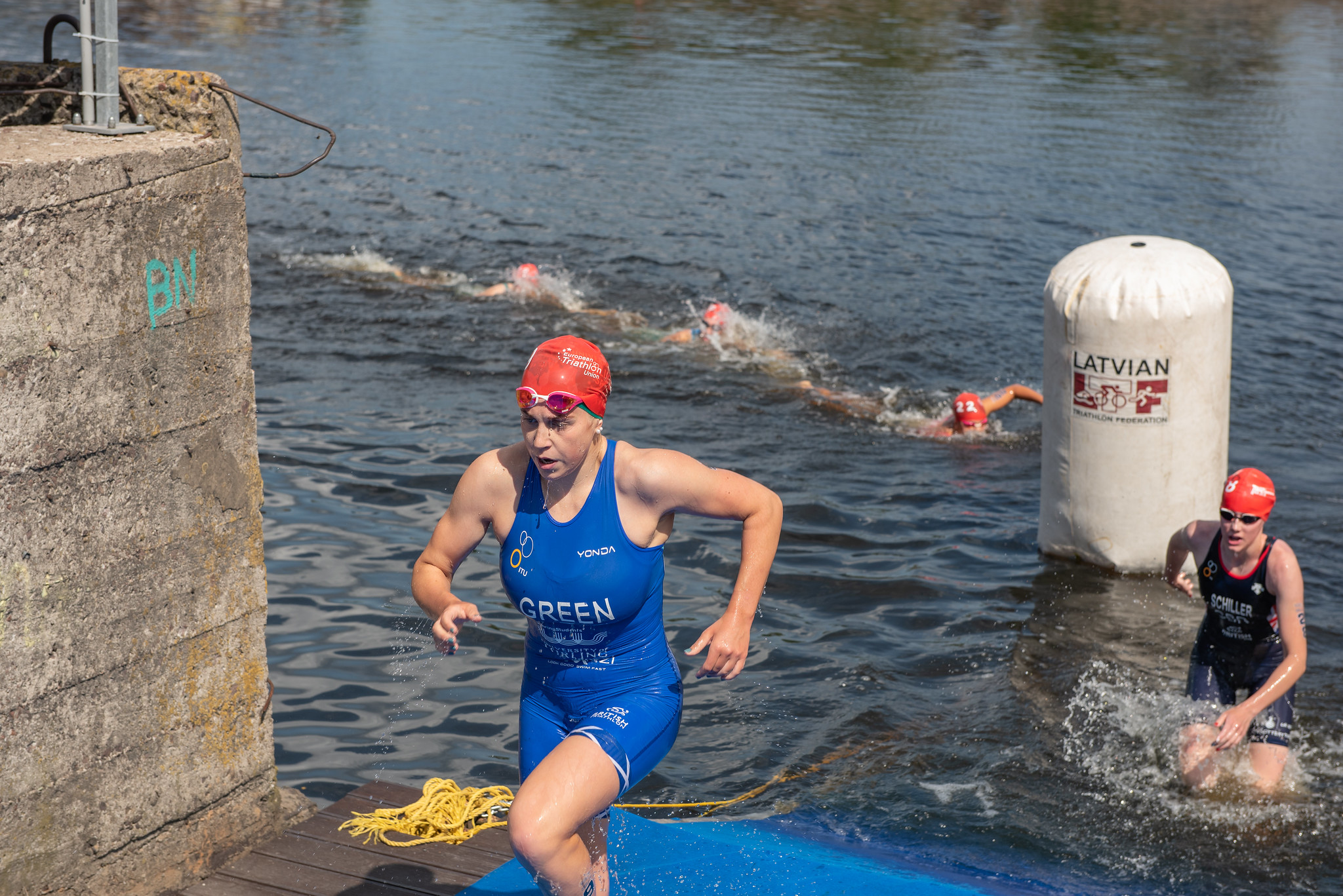
Seregni was first out on the bike, Sophia Green GBR, bronze here last year, chased with Eden Schiller GBR. Green comes here with a win last weekend in Wales and confirmation of selection for the GB Junior Squad in Lausanne. Just the sort of boost you need before a big race.
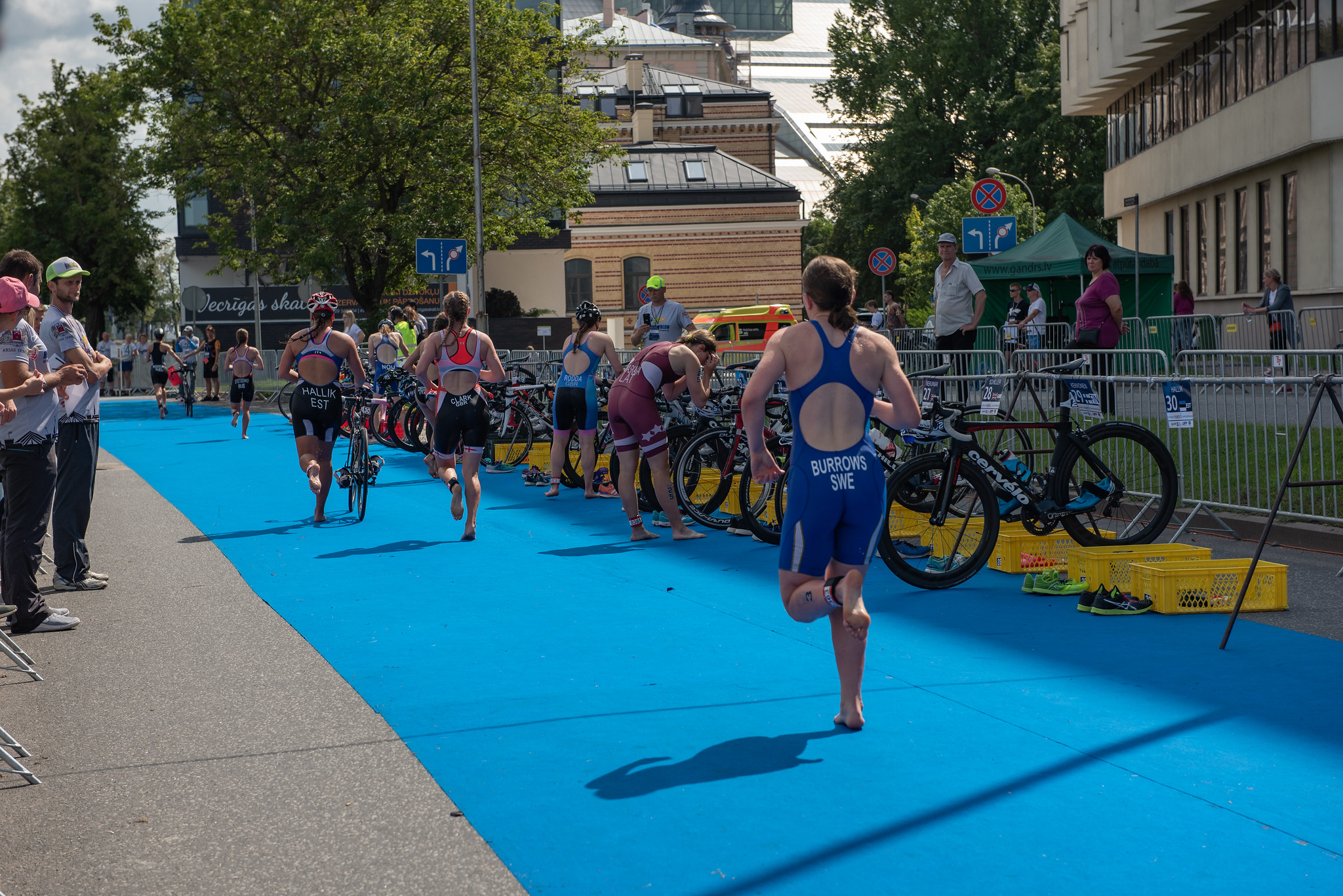
Leitāne was way back and would now have to work hard with the two athletes alongside her.
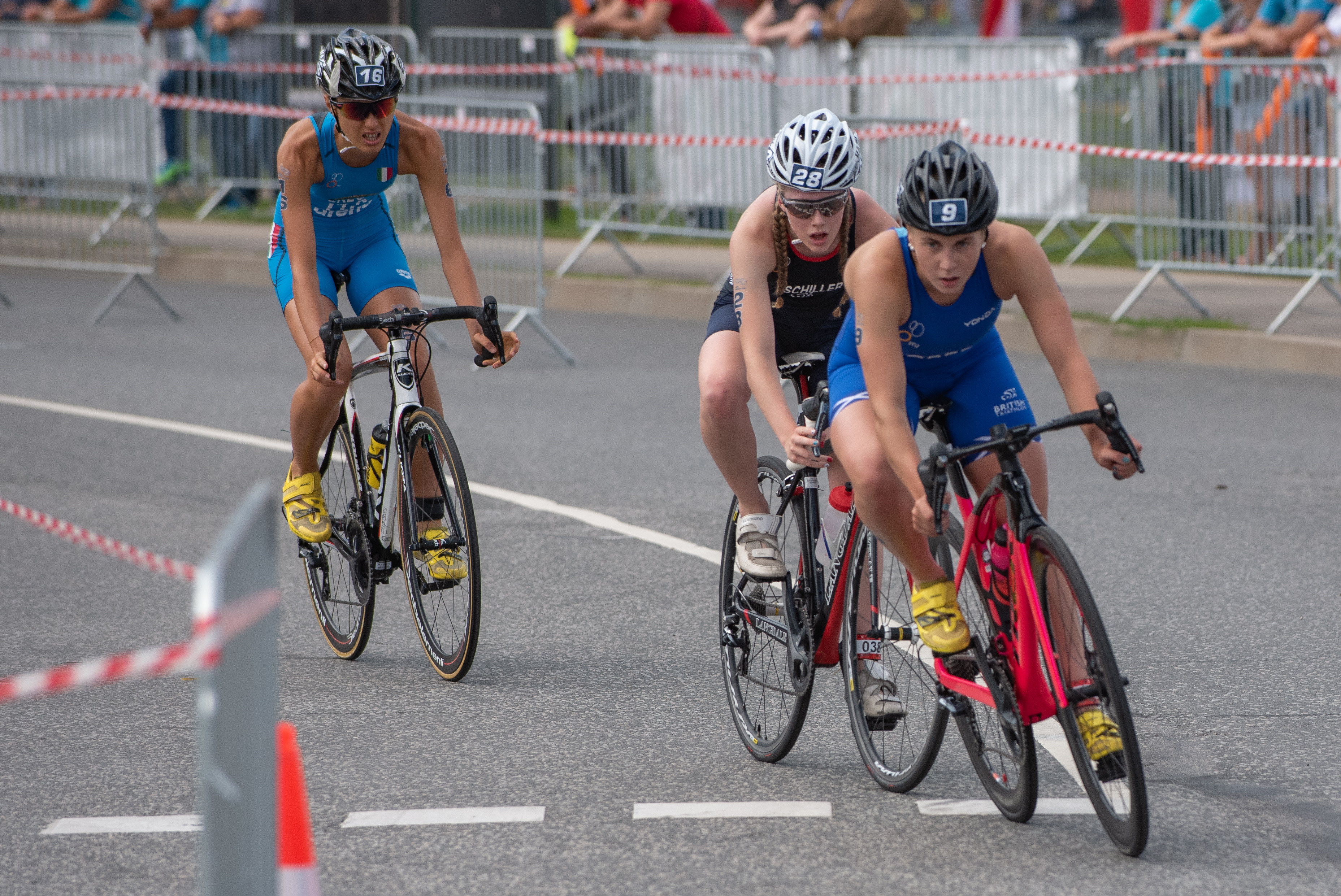
Back at the front and Seregni was joined by the two Brits, Green and Schiller, who has moved to the Junior Ranks from a successful win as an Age group athlete in Glasgow last year. The three looked set to chain-gang their way around the 20k course. A 25 second lead as they returned to pass the transition area and the crowds was announced and the chase pack upped the tempo to try and bridge the gap.
A crash was perhaps inevitable as the roads, still slightly damp from an earlier shower lead the athletes to believe that the corners could be taken at speed. A dry section led them into a sweeping turn and as one wheel slid away the impact with the ground was unavoidable. Estonia’s Anette Hallik, Sweden’s Frida Nöu and NZL’s Brea Roderick went down. Roderick’s race looked over as her chain snagged and, struggling to release it, she was passed by many athletes.
Leitāne was working hard and carving through the field to try and rescue something but it was a huge task as up front, the trio were powering along, organised, strong and determined.
The lead, now over 40 seconds but the chase group was head down and in pursuit. Ida Lucia Burrows SWE, Sinead Clark and Katie Rodda GBR, Angelica Prestia and Elisa Terrioni ITA looked good to catch the leaders but without the determined organisation of the leading trio, it simply didn’t come together. They were, however, pulling away from those behind.
Green’s race last year saw a similar scenario; she had a strong swim and then a solo ride in pretty awful weather. She went on to win the bronze in 2018 but this time around she had the company of Seregni and Schiller. Seregni’s running is impressive but Schiller, new to the circuit, could be a potential threat to Green winning silver.
The Italian rode tactically, letting Green and Schiller take the pressure at the front and eased into T2 in third place. Green racked first but Schiller was first out after Green’s bike needed to be racked again.

The two Brits out first.
Seregni chased.
The pack came in with work to do.
At the front, Schiller sat on Green’s shoulder on the riverside run for the first few minutes and then moved up alongside, occasionally edging forwards. GBR uniforms but a Scottish heart beating strong for Green.
Seregni wasted no time and by the first turn had the leaders in her sight. With not even a glance to the side, the Italian’s pace took her past the two Brits. Green was not giving up and latched onto the Italian. Schiller slipped back, but still with a podium chance.
We have seen Seregni race against the Elite over the Aquathlon and have seen her win easily. This time, she was being challenged by Green. Not something we often see. Schiller was now the length of transition behind the leading duo.
Behind, Burrows was looking strong and, focussed, she ate in to the lead that Schiller had, overtook her and moved into bronze medal position.
The breeze was strong, giving the athletes an advantage on some stretches of the course but then hammering into them on the return. Still it was Italy and Great Britain at the front as the bell sounded for the final lap.
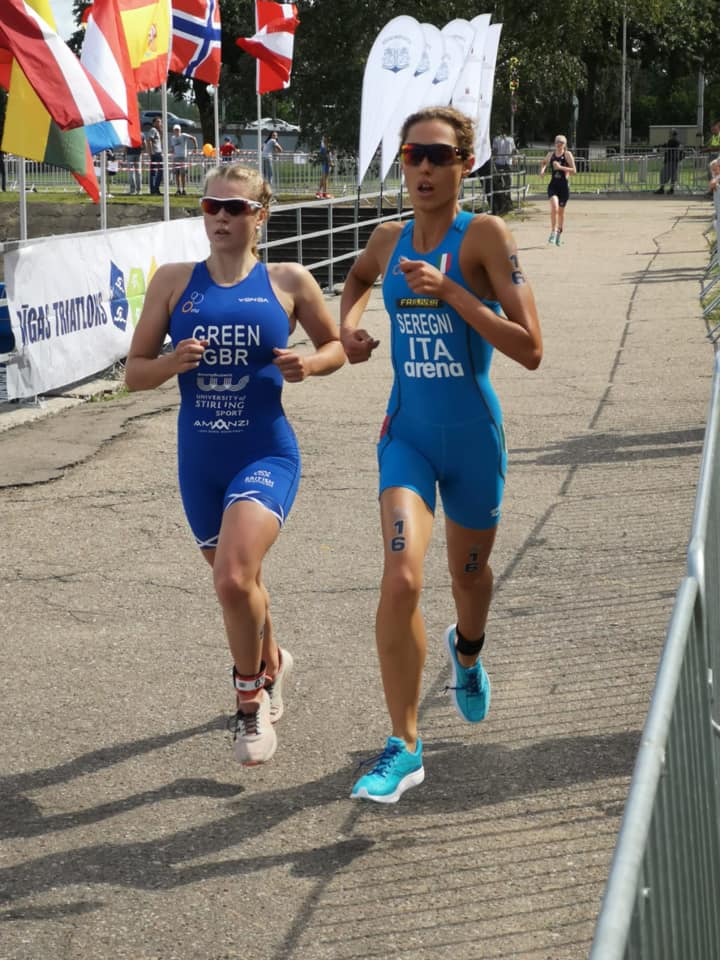
The long run along the promenade saw Seregni hold control and occasionally move to the front. Once the turn had been completed, she increased the pace slightly and within a couple of hundred metres had dropped Green.
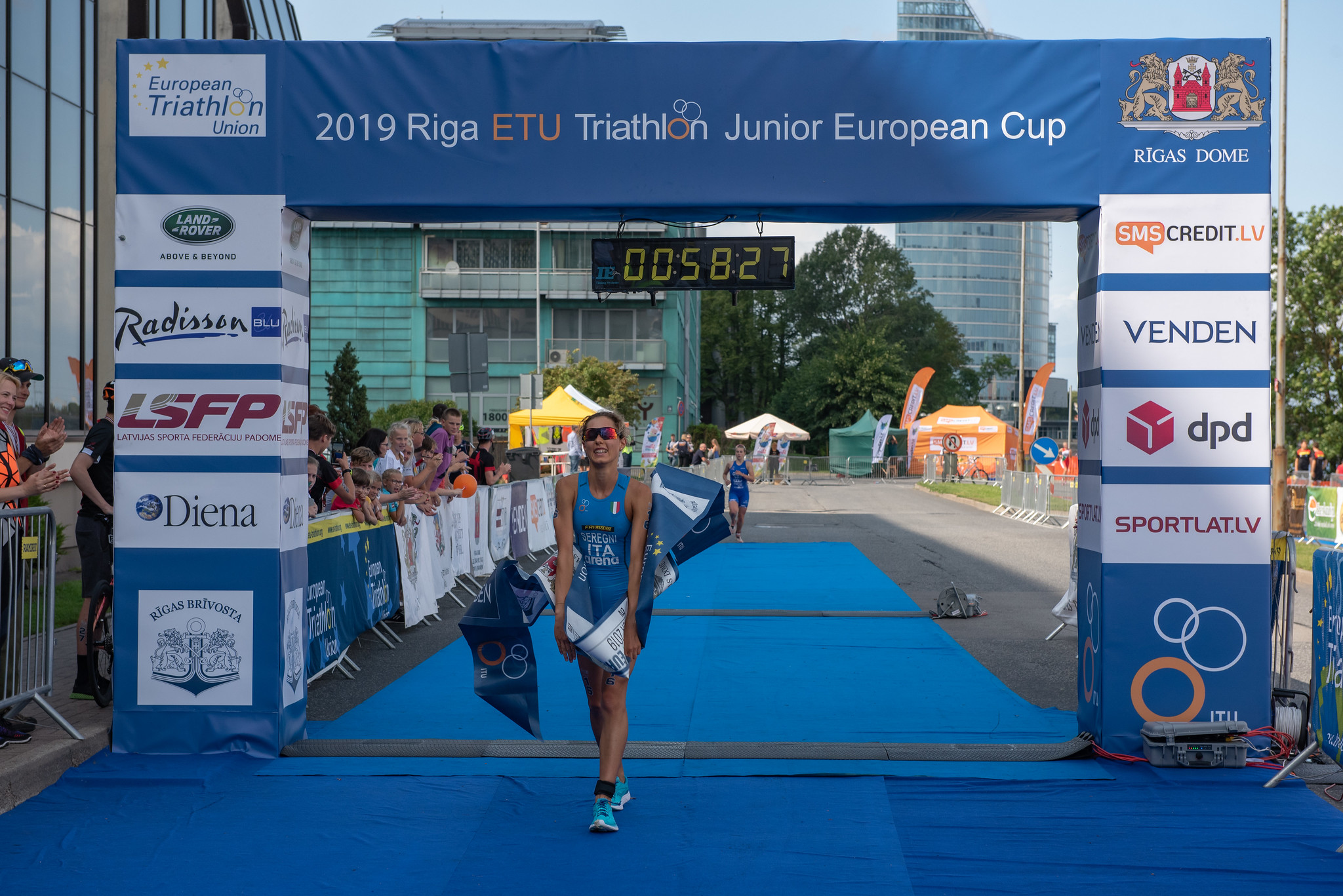
As the noise of the PA system increased, telling Green that the finish was not too far away, she was able to glance over her shoulder to see what sort of safety barrier she had. It looked good enough for silver and so, unable to catch the speeding Italian, Green settled for the second position, crossing the line comfortably ahead of Burrows. For the Scottish athlete, a great improvement on her bronze last year. For Burrows, her second podium, after her junior bronze in Ibiza at the Aquathlon but her best result ever in a triathlon. Team GB, well, four athletes in the top ten! Seregni, simply amazing.
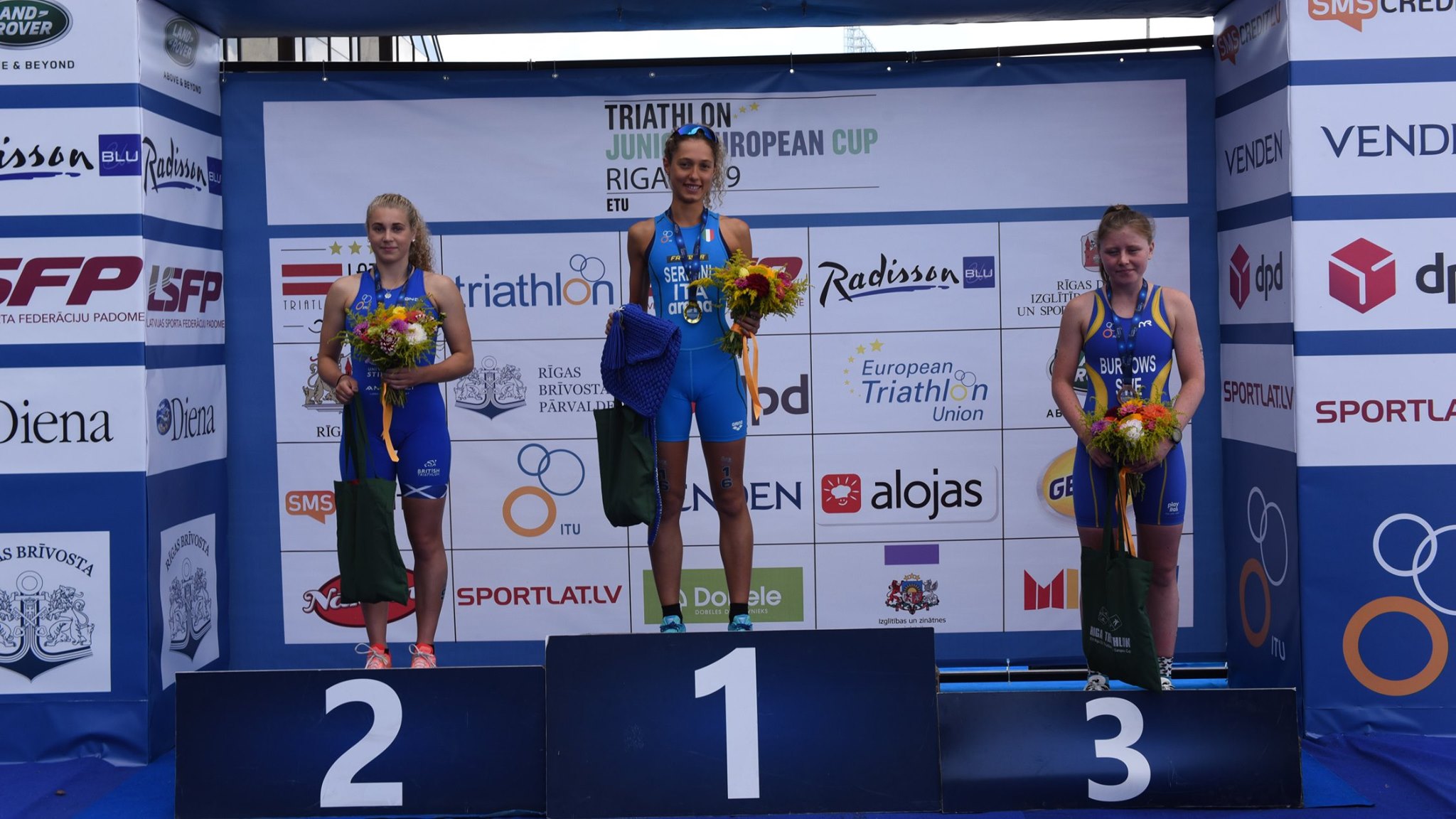
For the Men’s race, still no wetsuits, which would give once again the benefit to the swimmers. The wind was still strong but the skies looked good and the sun was shining over Riga.
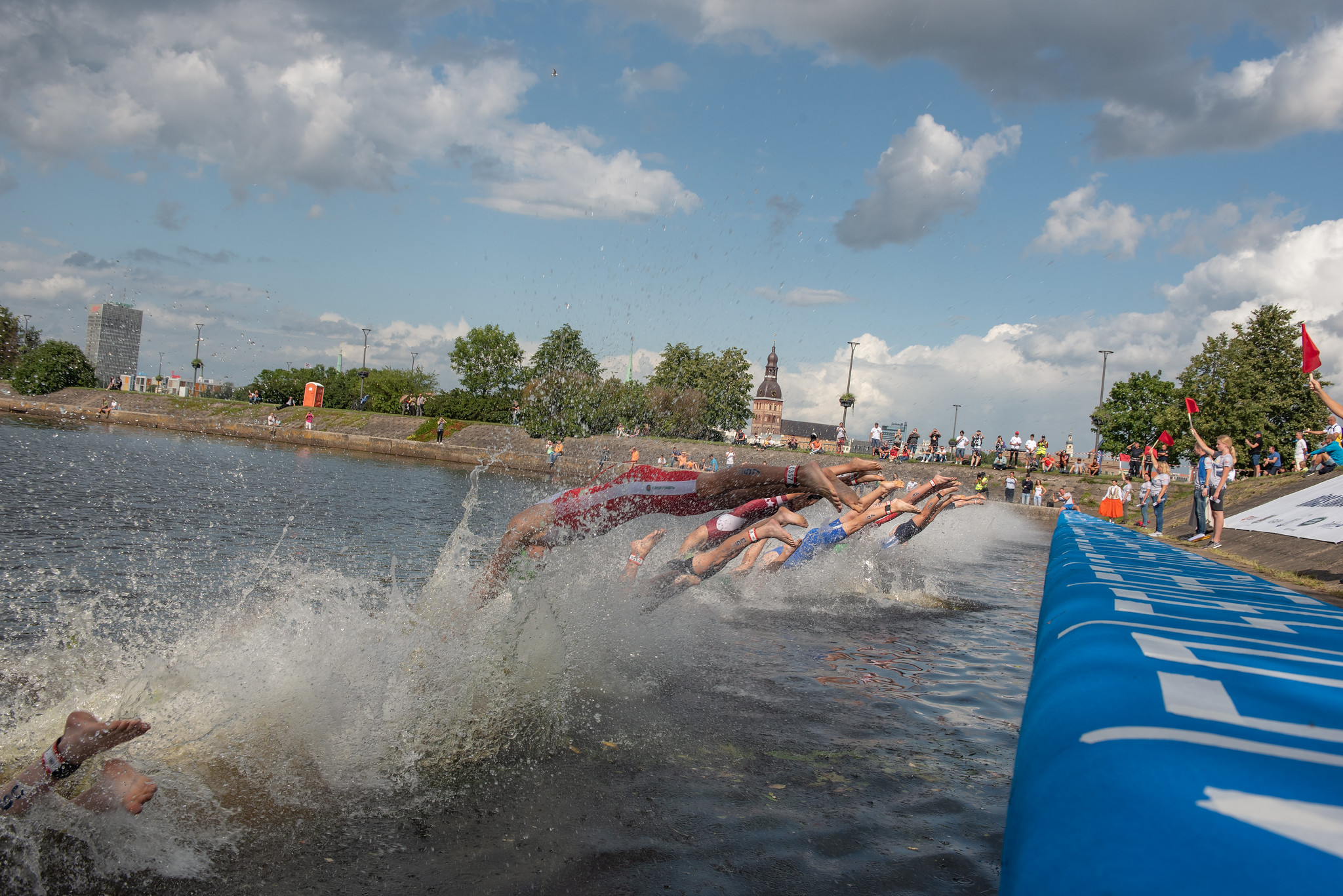
The 58 athletes lined up for the start. Razzmatazz over, the heartbeats kicked in. Silence and then they were off. The Youth Olympic Champion, Dylan McCullough NZL immediately powered to the front on the far side of the course. Long and powerful strokes took him into the lead. Alone and with nobody to bother him, McCullough had a clear line to the run buoys. Nobody had the power to keep with him. All of his movements pulled him forwards and he hit the first turn buoy with over ten seconds in the bag.
A small group of four had managed to create the smallest of gaps between themselves and the main group. Saxon Morgan NZL and Andreas Carlsson SWE were both there. Memories of Malmö, where Carlsson really had the upper hand. With a small advantage at the turn, they were almost caught on the long drag back down the course towards the blue carpet.
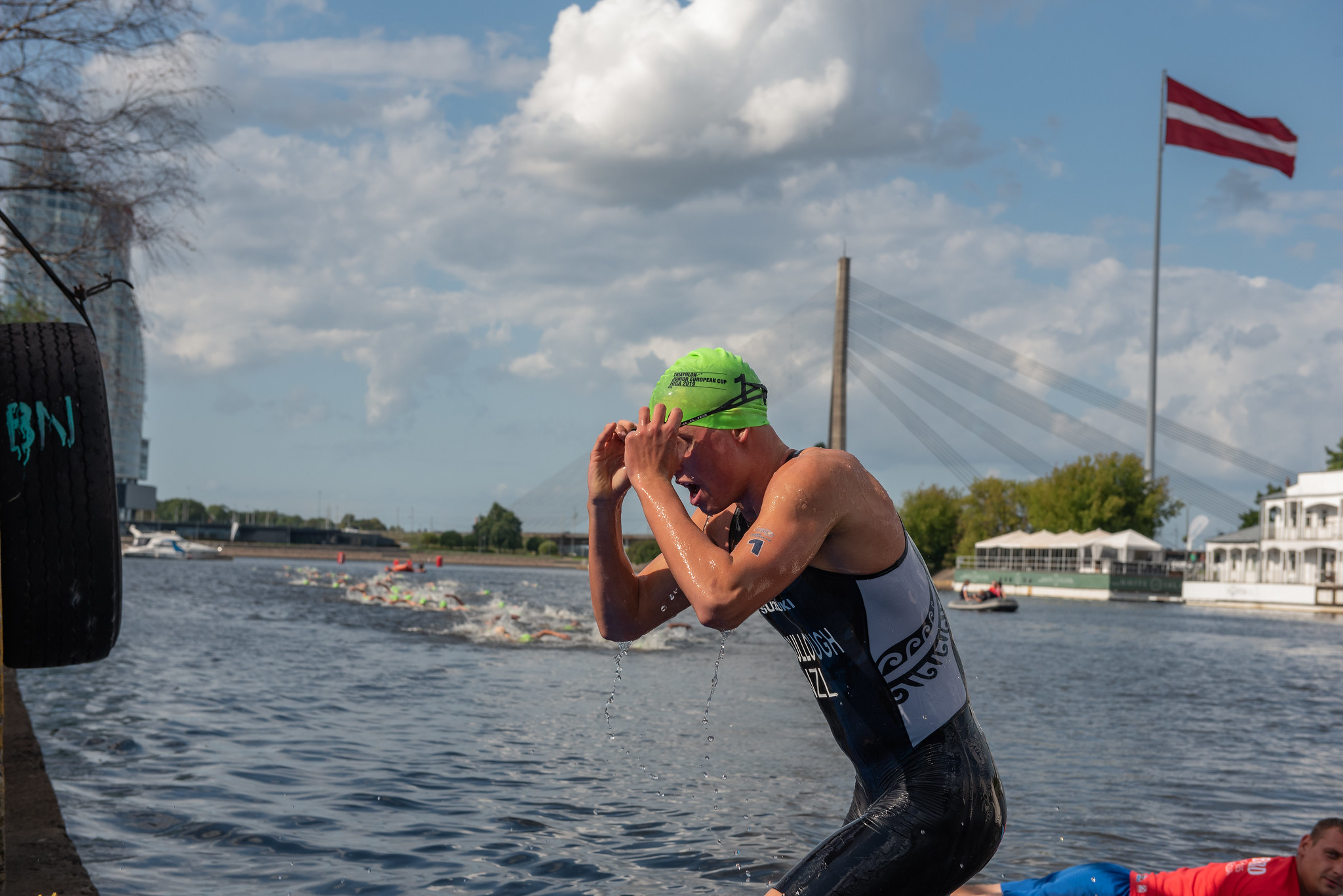
Meanwhile McCullough made for the shelter of the wall, reading the wind direction well, and continued on his course to the swim exit and was into Transition well ahead of the chasing athletes, who were now in a tight bunch.
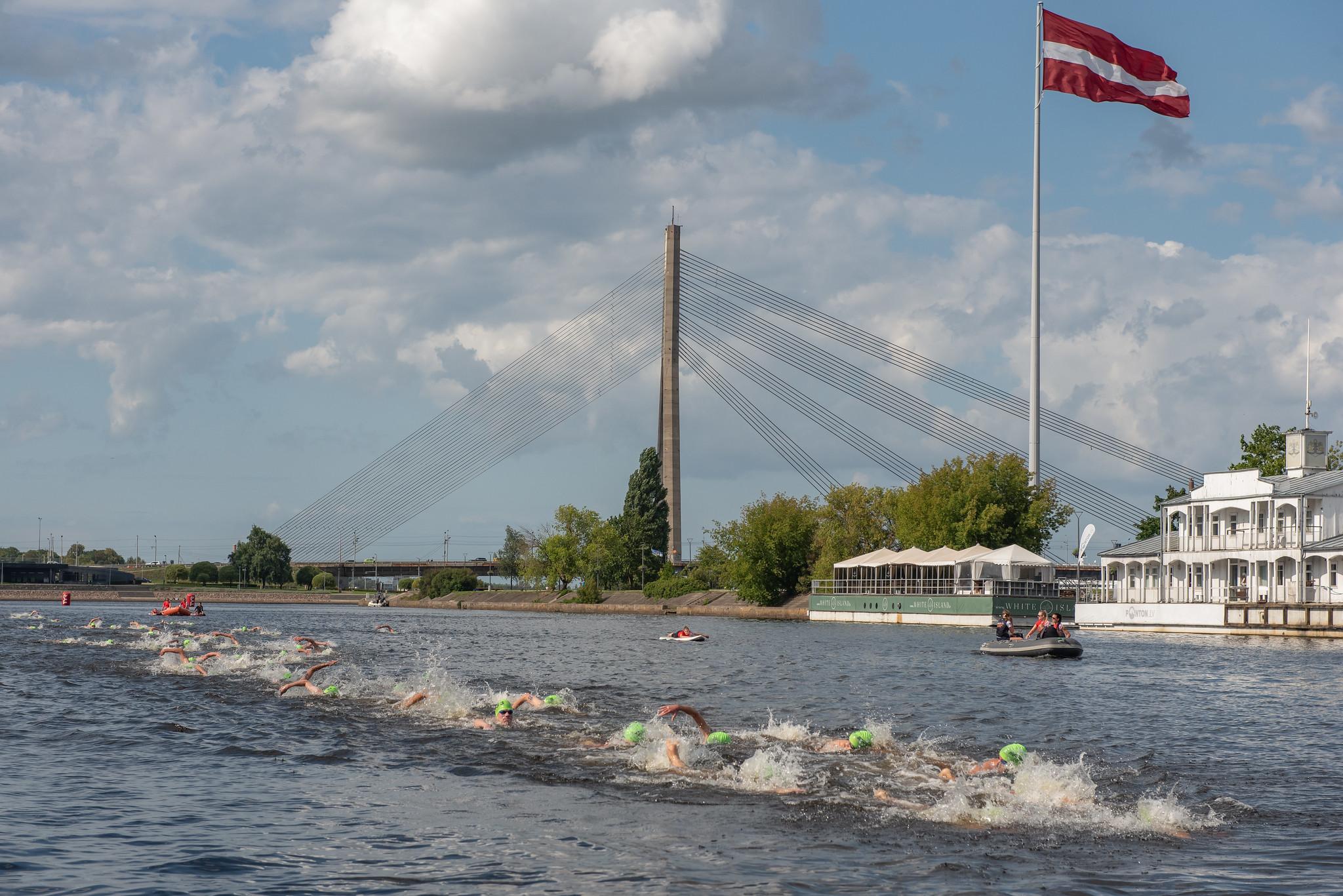
It was Davide Ingrilli ITA, Carlsson, Elai Izhak Chaski ISR and Morgan who were in immediate contention and it was frantic as the athletes sped through the first transition.
Now out onto the bike. The road conditions were now better than for the women. The sun had dried up the puddles and we would see fast and aggressive riding along the 20k course.

McCullough held the lead, alone. Looking back and realising that he needed company, he was not caught before he was able to see how fragmented the race had become.
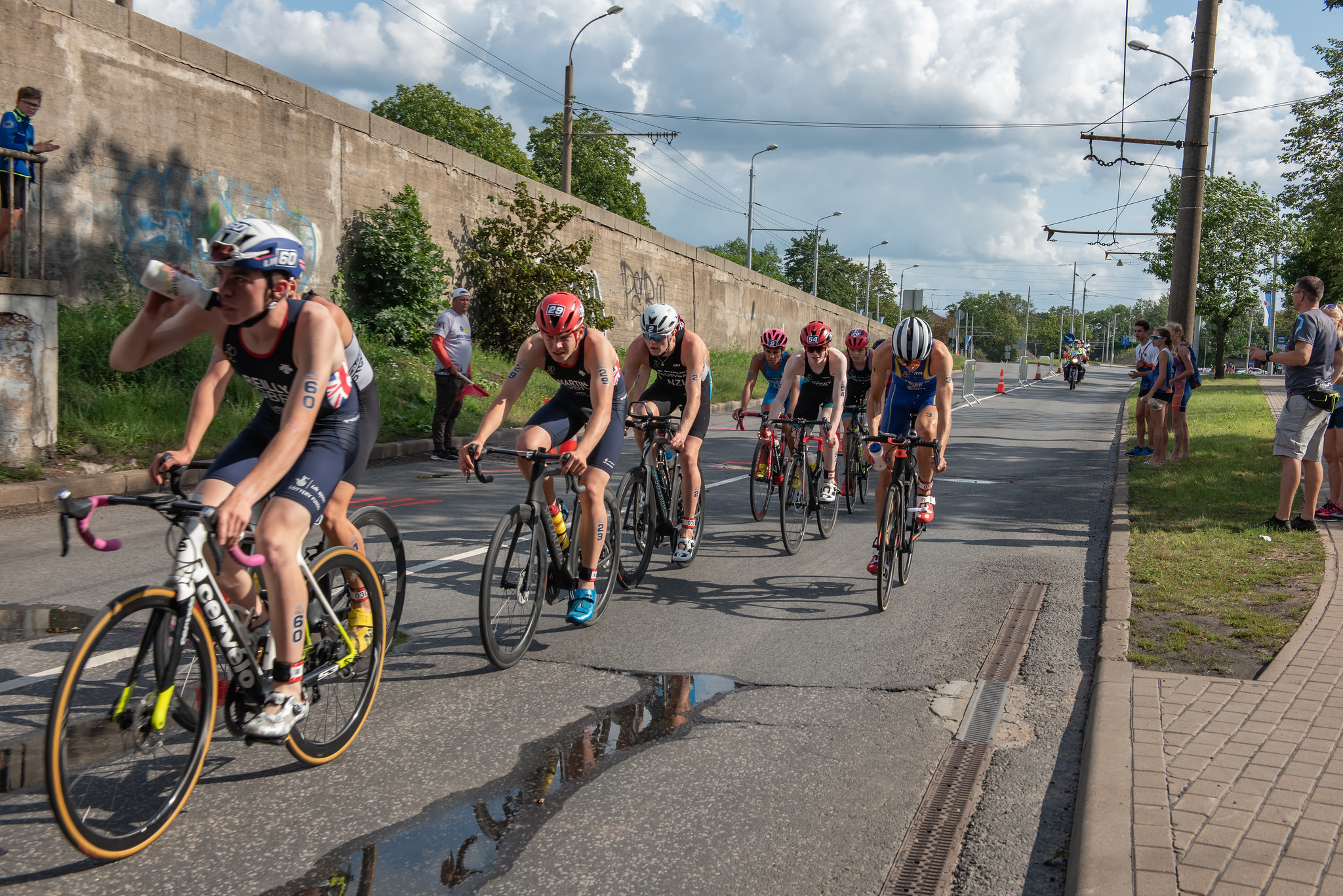
Behind him a dozen athletes were working hard. Hamish Reilly GBR shouting loudly and taking command at the front of the pack ensured that the pace went up . Suddenly, there was realisation that they could catch the leader. Carlsson and Morgan were tucked in the group. Jonathan Oakey GBR and Riccardo Brighi ITA also added fuel to the fire with bursts of speed.
McCullough, on this multi-turn course, could see where the pack was. Could he possibly keep ahead and have any legs left for the run?
Constantly checking behind him, it seemed as if he was willing them to catch him and to get that shelter within the pack. The wind was quite strong and all the time he was alone, he was emptying the tank.
His wish was granted just before a turn and the shelter was found. The group had dropped a couple of athletes and now they were 11.
Reilly was very visible. Reilly was very audible. His work at the front end of the pack with Oakey ensured a breakaway with Morgan. Denmark’s Valdemar Solok caught the back of this group and replaced Oakey as the pace got too much.
And then they were three. Great Britain, New Zealand and Denmark.
The work done by these three was impressive. Constant rotation of the lead; text-book chain-gang riding. 8 seconds ahead of Oakey. 15 seconds ahead of the pack in which Carlsson was lurking. Could these three be the podium?
Coming into T2, Reilly had the real advantage. Wearing #60 he only had to run a few paces with his bike before he could get his running shoes on. Memories of Alistair Brownlee in Cagliari?
Out on to the run and he was on the shoulder of Morgan. Solok was dropping back.
The pack arrived and Carlsson was swiftly through and out on the chase.
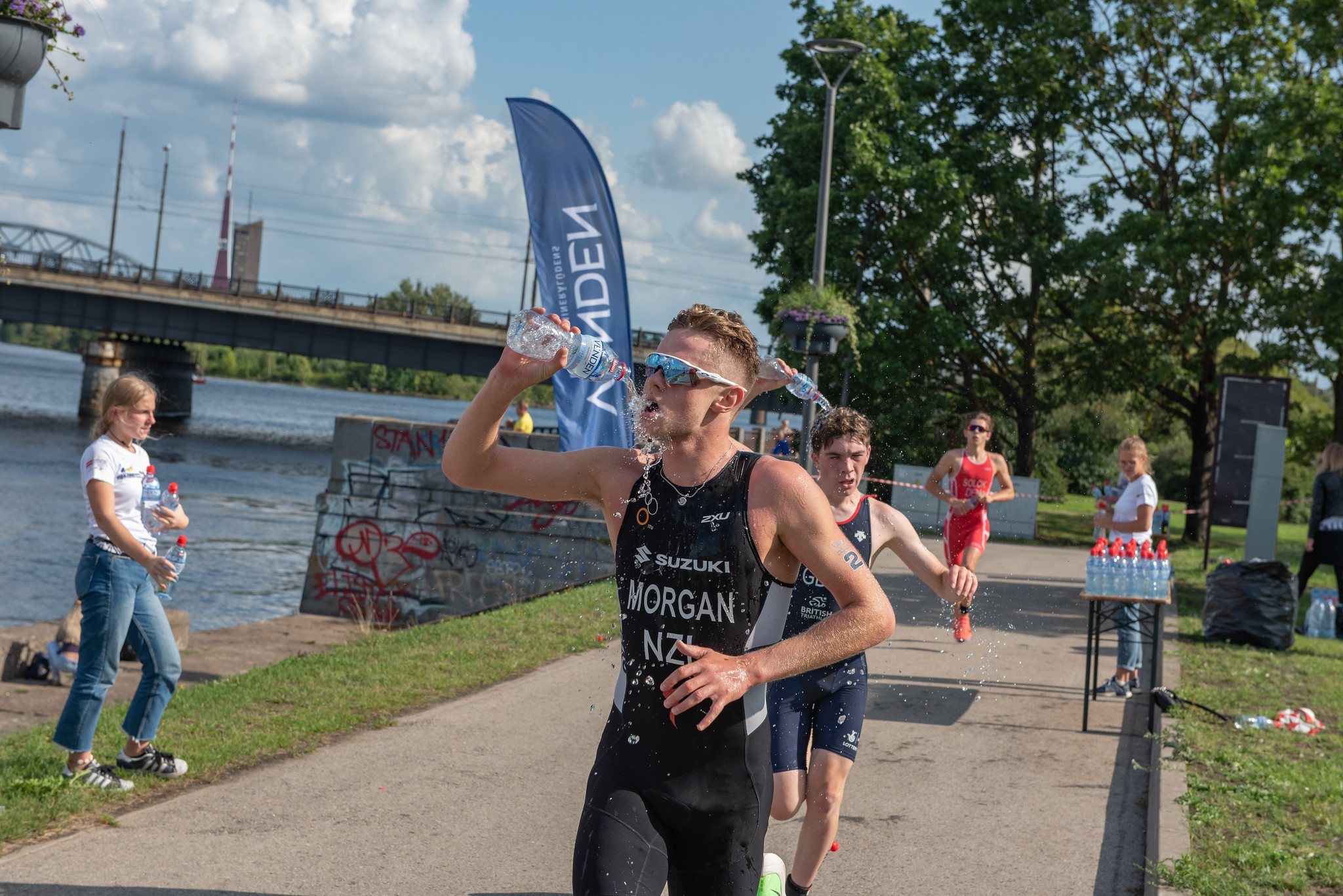
At the front, Morgan and the younger Reilly were to become a distant duo to the Danish athlete. This was Reilly’s second outing in GBR kit, having previously made his debut in Kitzbühel. A good top ten finish there but here in Riga, a medal chance and the race of his life.
Carlsson had broken free of the main group and was using his power on the run to chase down the leaders. Coming to the end of the first of the three-laps on the run and Reilly was beginning to show signs of discomfort. Further back, Israel’s Itamar Shevach Levanon was catching and passing athletes at a great rate than Carlsson. If these two continued at this pace then Reilly’s race would be over.
Morgan ran proud. Head high, easy and relaxed, he looked superb and was now comfortably ahead. Lapping athletes now, he knew that this race was his. Reilly, 20 seconds back, could still see the Kiwi but was also keeping a watchful eye out for Carlsson and Levanon.
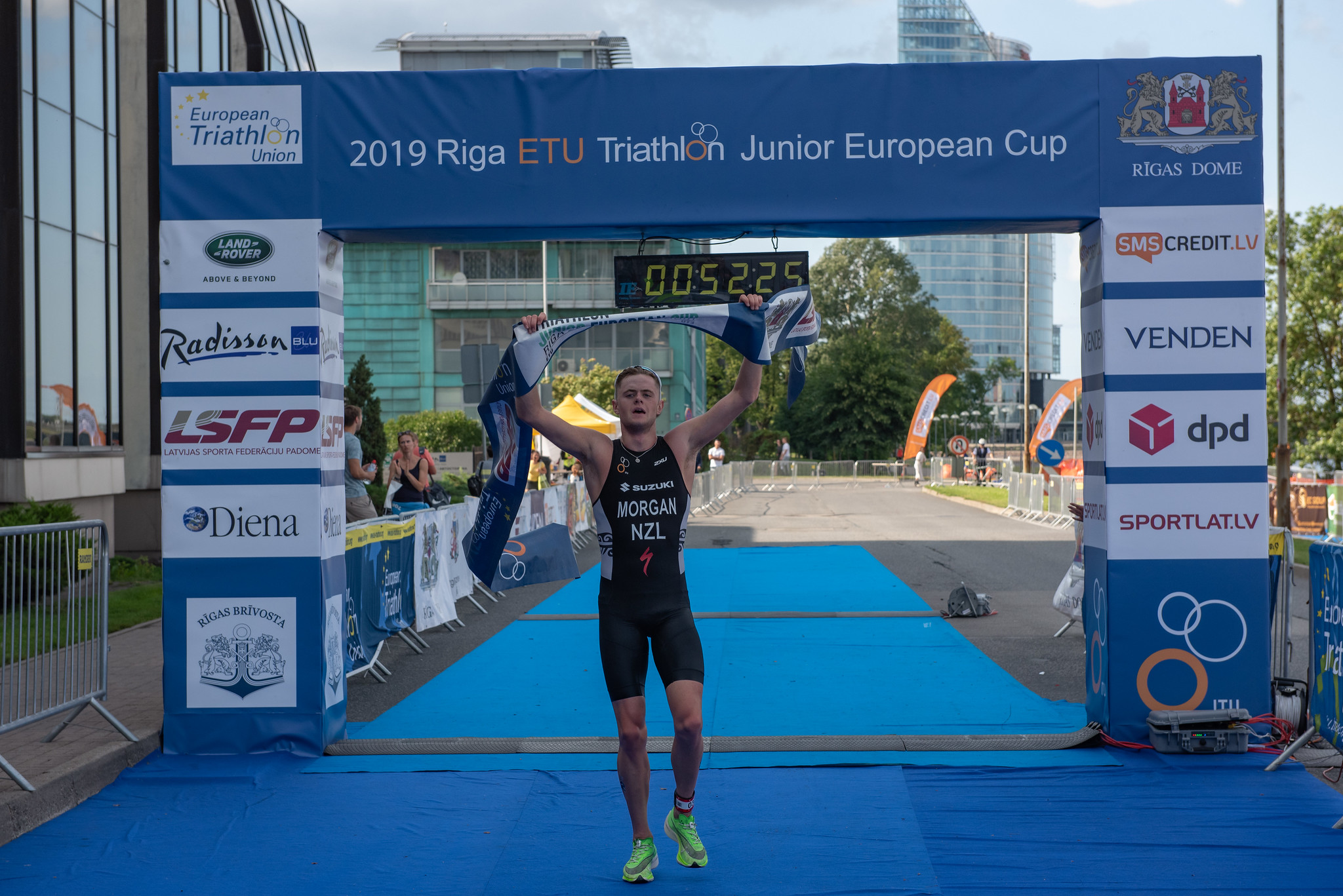
Morgan glanced over his shoulder as he got closer to the finish. Safe and sound. Time to relax and enjoy. Time for the photo. Glasses raised, smile ready, he hit the blue carpet and the tape was his. An injection of power from Carlsson took him to silver and a relieved Reilly crossed the line for the bronze and his best result so far.
Levanon’s pace on the run was not quite enough to nudge Reilly off the podium but was to lead two more athletes into the top ten, with Chaski and Itamar Eshed claiming 7th and 8th. Italy, with their victory in the women’s race, posted a 5th and 6th here with Brighi ahead of Ingrilli.

Once again Riga has delivered a great event. This year, the weather was much kinder and this year saw a bigger attendance for the Open Race. Events like this, in great locations, with full support of the city authorities help the sport grow and ensures the legacy.
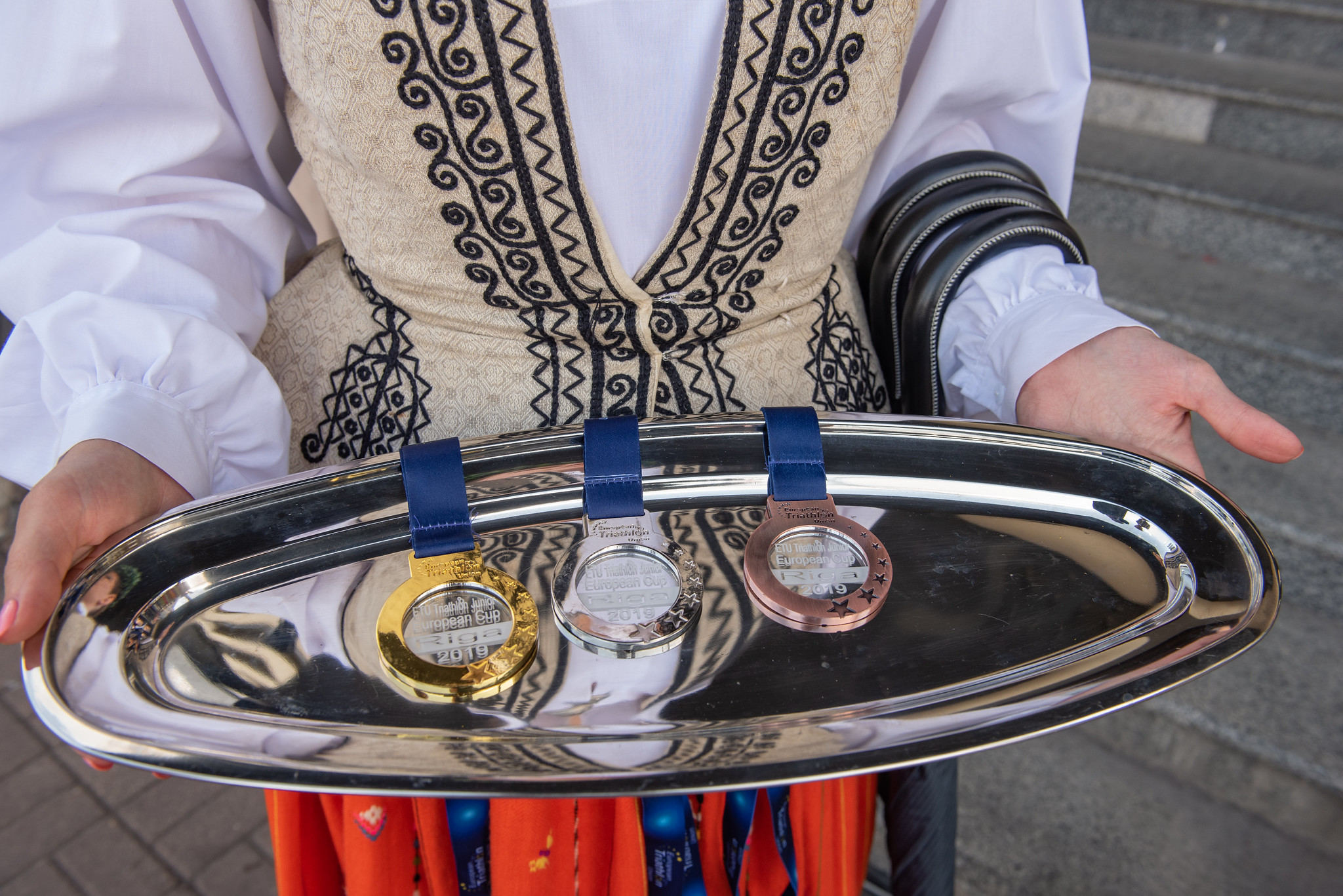
We often hear from the winners but on this occasion, let’s hear from one athlete whose previous venture out in national uniform was at the Youth Festival last year in Kitzbühel.

It was the determined attack by one of the younger athletes that delivered the drama to the Men’s race and behind that attack on the bike was Hamish Reilly, “I came to Riga not knowing what to expect other than it was going to be a very hard race. Being my first European Cup I went onto the pontoon in last place meaning I had to swim a bit further to the first buoy, however this didn’t impact me too much and I had quite a good swim coming out of the water in the top 15. A swift transition helped me get into the chasing pack straight away.
We managed to close the gap Dylan had created by lap 2 with some strong work from the GB lads. I knew if I wanted to have any chance of a podium I would need to get into a breakaway. A perfect attack by Jonny (Oakey) allowed this and we managed to get away and soon the breakaway was soon down to 3 people. It was tough going but Saxon and I worked well together managing to get a good lead on the chasers.
The first lap of the run was fast and by the end of it I could feel the hard work done out on the bike in my legs. I dropped back and settled into my own pace. After a tough run, I was super pleased to cross the line in 3rd place after being overtaken in the late stages of the run. My overall experience of Riga has been awesome, it’s a lovely city and race and I hope to return again soon!”
Buzzing with excitement and with the strength over all three disciplines, Reilly’s future looks good. BTF and Maidstone Grammar – look after him!
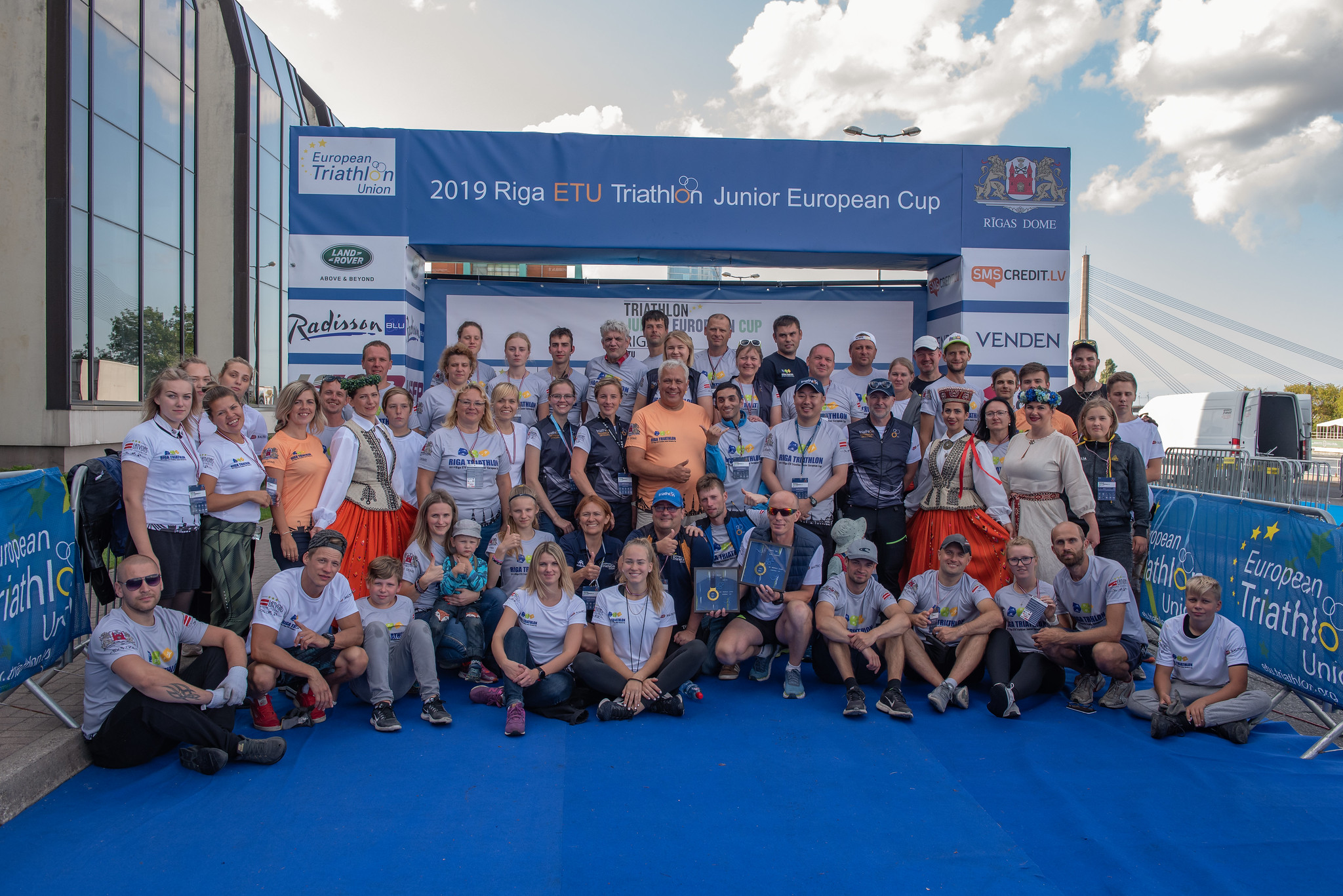
Many thanks to Andris Mačāns and Evita Priedīte for their excellent post-production photos, to Marjans Galarovskis for the live TV coverage and of course to the Latvian Triathlon Federation.
The ETU Rankings will indeed be exciting to look at once the computer wizards have done their work.
Related Event: 2019 Riga ETU Triathlon Junior European Cup
| Results: Junior Men | |||
|---|---|---|---|
| LAP. | Ander Markus Kroon | EST | LAP |
| LAP. | Raimonds Levickis | LAT | LAP |
| LAP. | Olli Elo | FIN | LAP |
| LAP. | Alexander Dedovich | BLR | LAP |
| DSQ. | Karl Mell | EST | DSQ |
| DSQ. | Risto Holtsmeier | EST | DSQ |
| DSQ. | Mikita Zabaronka | BLR | DSQ |
| DSQ. | Frederik Pilarski | GER | DSQ |
| DNF. | Johan Tamm | EST | DNF |
| DNF. | Oskar Miller | EST | DNF |
| Results: Junior Women | |||
|---|---|---|---|
| 1. | Bianca Seregni | ITA | 00:58:27 |
| 2. | Sophia Green | GBR | 00:58:36 |
| 3. | Ida Burrows | SWE | 00:59:04 |
| 4. | Angelica Prestia | ITA | 00:59:50 |
| 5. | Eden Schiller | GBR | 01:00:06 |
| 6. | Alevtina Stetsenko | RUS | 01:00:13 |
| DNF. | Yali Lerer | ISR | DNF |
| DNF. | Abigail Bedwell | GBR | DNF |
| DNF. | Yeva Minich | BLR | DNF |
| DNF. | Brea Roderick | NZL | DNF |

